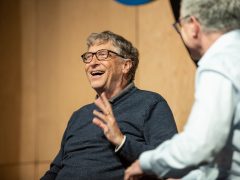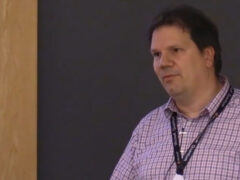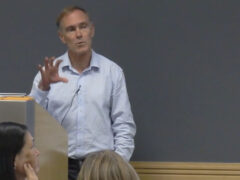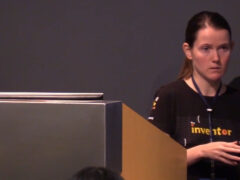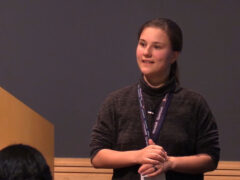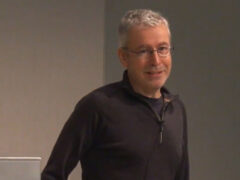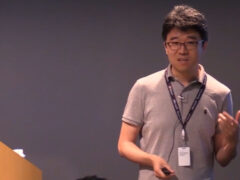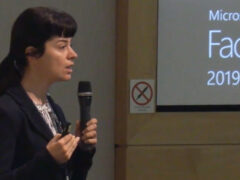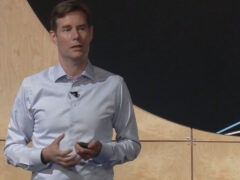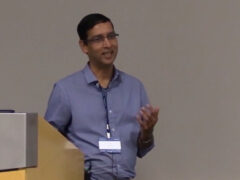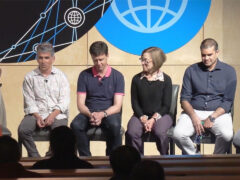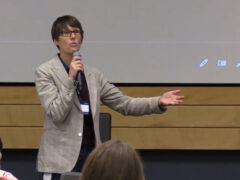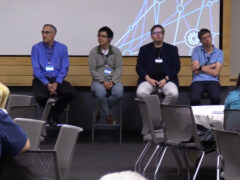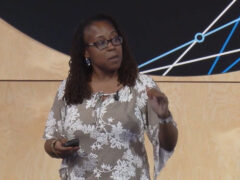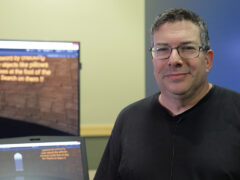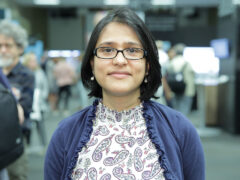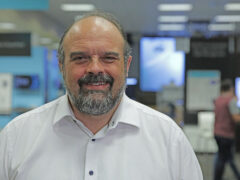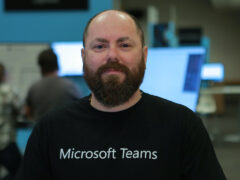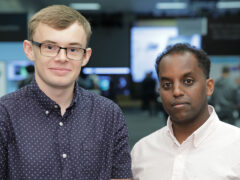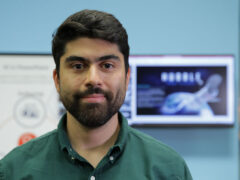What can we solve with a Quantum Computer?
- Edward Farhi, Krysta Svore, Matthias Troyer, and Nathan Wiebe | Microsoft Research, Massachusetts Institute of Technology, Microsoft
In 1982, Richard Feynman first proposed using a quantum computer founded on the laws of quantum physics to simulate physical systems and achieve exponential computational speed-ups over conventional computers. In the thirty years since, quantum algorithms have been invented to solve problems in fields like number theory, chemistry, and materials science that would otherwise take longer than the lifetime of the universe to solve on an exascale classical machine. Quantum algorithms promise ways to break RSA (a mainstay of e-commerce), combat global warming, and design room-temperature superconductors. In addition, recent advances show how quantum computers can learn better deep machine learning models for use in speech and vision tasks. This session will highlight killer applications of quantum computers and the potential global impacts, both scientific and societal, as well as pose challenging open questions for the computer science community to tackle.
Speaker Details
I manage the Quantum Architectures and Computation Group (QuArC) at Microsoft Research in Redmond, WA. I am passionate about quantum computation and determining how to better solve problems on a quantum computer. My research focuses on quantum algorithms and how to implement them on a quantum device, from how to code them in a high-level programming language, to how to optimize the resources they require, to how to implement them in hardware. Our team also works on designing a scalable, fault-tolerant software architecture for translating a high-level quantum program into a low-level, device-specific quantum implementation, which we call LIQUi
Matthias Troyer received his PhD in 1994 from ETH Zürich, working on numerical simulations of high temperature superconductors and related materials. After three years as postdoctoral fellow at the University of Tokyo he returned to ETH in 1998 as lecturer of computational physics. After receiving an assistant professorship grant from the Swiss National Science Foundation in 2000, he was quickly promoted to associate professor in 2002 and full professor in 2005.He is a recipient of an ERC Advanced Grant of the European Research Council, a Fellow of the American Physical Society, and a Member of the Aspen Center for Physics.
His research activities range from quantum simulations and topological quantum computing to novel simulation algorithms, high performance computing, and computational provenance. He has been a pioneer of cluster computing in Europe, having been responsible for the installation of the first Beowulf cluster in Europe with more than 500 CPUs in 1999, and the most energy efficient general purpose computer on the top-500 list in 2008. He is the leader of the ALPS project for the simulation of quantum many body systems. Through his former consulting work with BoostPro Computing he has, among others libraries, written the Boost MPI library, a modern C++ API for message passing on parallel computers.
Edward (Eddie) Farhi was educated at the Bronx High School of Science and had stops at Brandeis, Harvard, SLAC and CERN before coming to MIT where since 2004 he has served as the Director of the Center for Theoretical Physics. He was trained as a particle physicist and started his career working on jets which are collimated beams of particles now of great interest at the LHC. He also worked on models of elementary particles in which quarks and leptons are themselves composites. He studied the properties of a superdense form of matter called Strange Matter. He worked with Alan Guth on two fundamental questions in general relativity: Is it possible to create a new inflationary universe in the lab? Is it possible to construct a time machine in a universe which does not have one?
Nathan Wiebe received his PhD in 2011 from the University of Calgary studying quantum simulation and adiabatic quantum computing. He then accepted a postdoctoral fellowship at the University of Waterloo before accepting a post-doctoral researcher position at Microsoft Research in 2013. His current work focuses on quantum machine learning, quantum simulation, quantum circuit design, and quantum device characterization.
-
-
Jeff Running
-
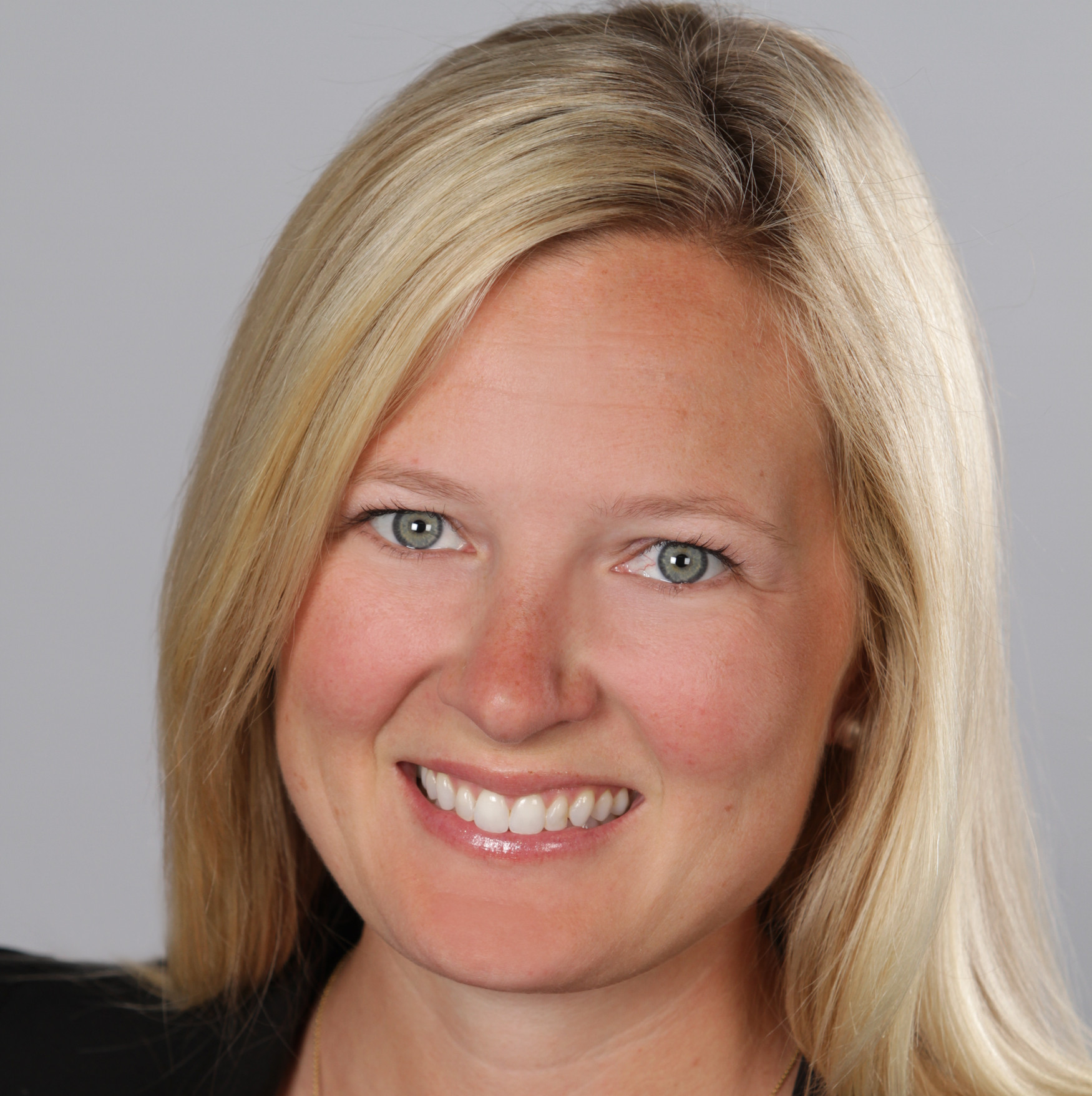
Krysta M. Svore
General Manager
-
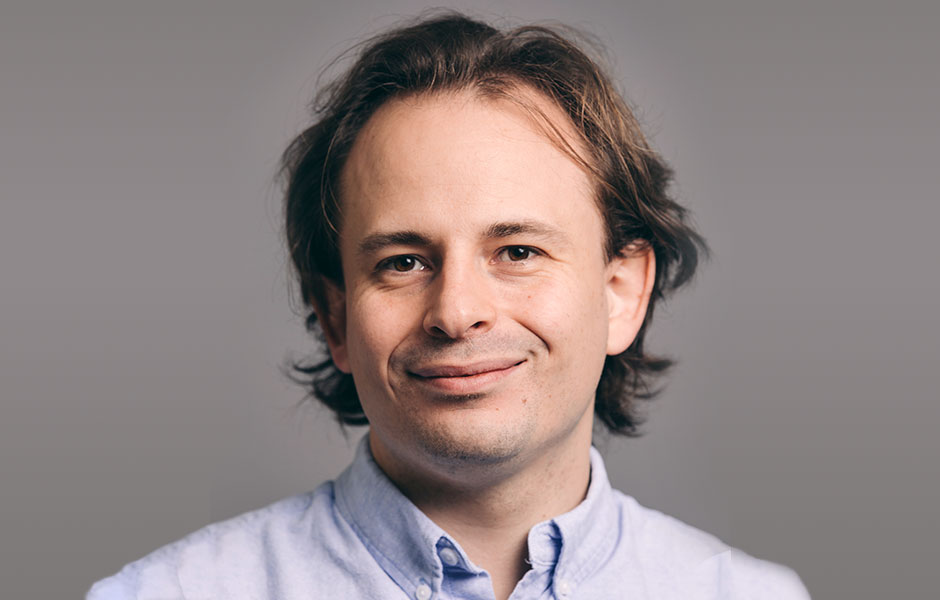
Nathan Wiebe
Researcher
-
-
Series: Microsoft Research Faculty Summit
-
-
-
Cars, Computing and the Future of Work: Specific topics of mutual interest
- Linda Boyle,
- Ed Doran,
- John Lee
-
-
-
Crowd, Cloud and the Future of Work: Updates from human AI computation
- Pietro Michelucci,
- Lucy Fortson,
- Franco Pestilli
-
-
Cars, Computing and the Future of Work: A UW & MSR Workshop: Welcome and Overview of Projects
- Linda Boyle,
- Ed Doran,
- Eric Horvitz
-
-
Crowd, Cloud and the Future of Work: Welcome and Updates
- Besmira Nushi,
- Ece Kamar,
- Kori Inkpen
-
Empowering People to Achieve More: How Useful a Concept is Productivity?
- Brendan Murphy,
- Yvonne Rogers,
- Steve Whittaker
-
Keynote - The Future of Work And the Power of Data
- Johannes Gehrke
-
Productivity in Software Development
- Neel Sundaresan,
- Margaret-Anne Storey,
- Prem Kumar Devanbu
-
Artificial Emotional Intelligence, Social Systems, and the Future of Collaboration
- Mary Czerwinski,
- Mark Ackerman,
- Gloria Mark
-
Workers of the World, Connect! Tech Innovations and Organizational Change for the Future of Work(ers)
- Mary Gray,
- Jamie Woodcock,
- Louise Hickman
-
Increasing AI Programmer Productivity
- Markus Weimer,
- Sarah Bird,
- Ce Zhang
-
Human-AI Collaboration for Decision-Making
- Besmira Nushi,
- Ayanna Howard,
- Jon Kleinberg
-
Future of Spreadsheeting
- Ben Zorn,
- Felienne Hermans,
- Daniel Barowy
-
Program Synthesis meets Notebooks
- Sumit Gulwani
-
Accessible Virtual Reality
- Eyal Ofek
-
Calendar.help: A Virtual Meeting Scheduling Assistant
- Pamela Bhattacharya
-
Visual Studio IntelliCode
- Mark Wilson-Thomas
-
Microsoft Teams: Collaborate with Any Researcher Anywhere
- Jethro Seghers
-
Project Alava: Programming Webs of Microcontrollers
- James Devine,
- Teddy Seyed
-
AI in PowerPoint
- Kostas Seleskerov

